Cantaloupe is a variety of melon that has a greenish skin and a bright orange flesh. It is a fruit rich in vitamins - A, B, C and K - as well as potassium, fiber and magnesium. Cutting it is not difficult at all, but you have to separate the pulp from the peel and seeds before you can eat it. You can serve it on its own, cut into slices or small pieces, or you can use it as an ingredient for other dishes.
Steps
Method 1 of 3: Serve the cantaloupe melon in wedges

Step 1. Wash and brush the whole melon
Rinse it under cold running water and remove any dirt from the peel by scrubbing it with a vegetable brush. Melons grow resting on the ground, so they can be carriers of bacterial agents that are dangerous to health (such as salmonella); therefore, it is very important to clean the entire outer surface well before slicing them.
It is not necessary or recommended to wash fruit or vegetables using soap or detergent. Clean running water and a good scrubbing are enough to remove both dirt and pathogens that may be present on the skin of your cantaloupe
Step 2. Cut the fruit in half
Arrange the melon on the kitchen cutting board or on a flat, sturdy surface. Hold it steady with your non-dominant hand as you carefully cut it in half using a sharp chef's knife, following an imaginary center line. It is not necessary to peel it before dividing it in two.
The skin of the cantaloupe melon is not edible, but if you have decided to eat the fruit with your hands, you can use it to easily hold the slices without getting dirty
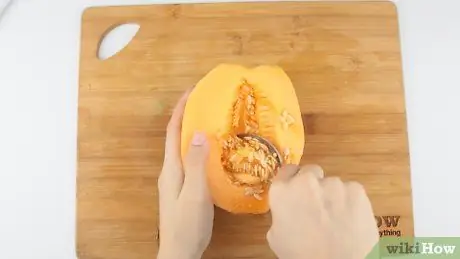
Step 3. Remove the seeds by hollowing out the two halves in the center
Place the two halves of the fruit so that the seeds are facing up, then use a spoon to scrape them in the center to extract the seeds and the stringy parts to which they are attached. Be careful to remove as little pulp as possible to avoid waste, especially as the central part is the juiciest and sweetest of the fruit.
Throw the seeds away in the compost bin or wet waste after separating them from the pulp, or clean them from the filaments and toast them in the oven, as if they were pumpkin seeds, for a tasty and nutritious snack
Step 4. Slice the two halves into wedges
Turn them over on the cutting board so that the skin is facing up, then cut them in half again to make four large equal slices. Now repeat and cut each quarter of melon in half (lengthwise) to form eight thin wedges.
If the diners are numerous or you prefer to eat some other fruit as well, you can cut the eight wedges again in half to obtain a total of sixteen slices of melon

Step 5. Serve the melon slices still with the peel
Once the wedges are obtained, you can serve them as they are so that you can eat them without the need to use cutlery, keeping them comfortably by the peel. This way you won't get your fingers dirty while you taste the pulp in small pieces. Do not eat the green pulp next to the skin.
Discard the peel when the orange pulp is done
Method 2 of 3: Cut a Cantaloupe into Pieces

Step 1. Wash and brush the whole fruit
Rinse the melon under cold running water and remove any soil residue from the skin by scrubbing it with a vegetable brush. Melons grow resting on the ground, so they can be carriers of pathogens that are dangerous to health (such as salmonella); therefore, it is very important to clean them well on the outside before slicing them.
Step 2. Remove the two ends of the fruit
Place the melon on the cutting board by placing it on its side, then hold it steady with your non-dominant hand while with the other cut 1-2 centimeters away from the side where the stem is located and from the opposite one. This way you will get two flat surfaces on which you can place it stably and you can peel it more easily.
Step 3. Remove the peel from the fruit
Turn it so that it rests on the flat part where the stalk used to be. At this point you can start peeling it using a sharp chef's knife. Slide the blade under the peel following the rounded outline of the fruit to remove it strip by strip. When needed, rotate the cantaloupe slightly and continue cutting until all the peel has been removed. When finished, look closely to see if there are any green-colored pulp residues that you can remove with a smaller knife.
As you peel off the melon, try to preserve as much of the orange pulp as possible to avoid waste

Step 4. Remove the seeds in the center of the fruit
After peeling it, cut it in half following an imaginary center line with the blade. Now place the two halves on the cutting board with the seeds facing up and extract them from the pulp together with the filamentous parts to which they are attached. Be careful not to scrape off the orange pulp as well, which is usually particularly sweet and juicy in this part of the melon.
The seeds can be thrown into the compost bin or wet waste or they can be cleaned from filaments and toasted in the oven, following the same procedure used for pumpkin seeds
Step 5. Cut the melon into small pieces
Flip the halves again so that the hollow where the seeds were held is facing the cutting board. Divide the two parts into strips three centimeters wide, then cut them perpendicularly respecting the same width to obtain uniform cubes (3 cm per side).
Once you have the melon cubes, you can eat them alone, directly with your hands or with a fork, or you can use them in the kitchen as you prefer by combining them with other sweet or savory foods
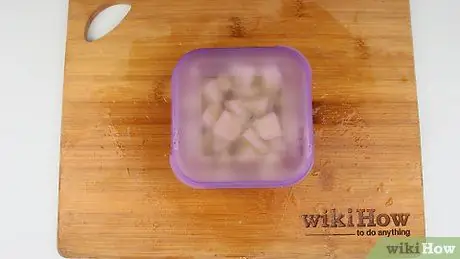
Step 6. Save leftovers
Transfer the leftover cubes to an airtight container such as Tupperware, then store it in the refrigerator. Usually the melon stays fresh for about three days. If you want it to last longer, put it in the freezer; in this way it will also be kept for up to a year.
Method 3 of 3: Eat the Cantaloupe Melon
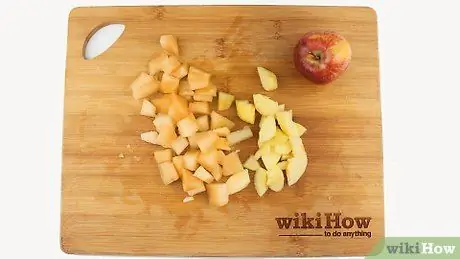
Step 1. Enjoy it alone or in combination with other fruits
Cantaloupe melon is a sweet, juicy and flavorful fruit that you can cut into slices or cubes. In addition to eating it on its own, you can pair it with your other favorite fruits. It goes well with almost any variety of fruit. For instance:
- Berries, such as strawberries, blackberries, or blueberries
- Bananas;
- Exotic fruits, such as pineapple and mango
- Green melon or watermelon;
- Peaches;
- Kiwi.
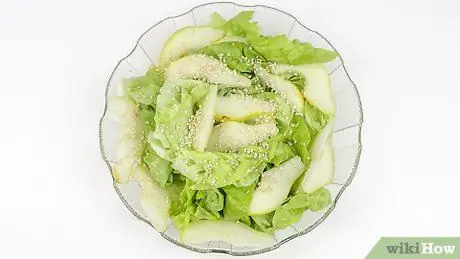
Step 2. Use it in a salad
Cantaloupe melon can be added to a green salad and goes well with several other varieties of leafy greens and vegetables. You can use it as an extra ingredient to enrich your favorite salads or make it the star of the dish. Try this combination for example:
- Cantaloupe melon cubes;
- Slices of cucumber;
- Diced red onion;
- Toasted sesame seeds;
- Extra virgin olive oil and rice vinegar;
- Salt and pepper to taste.
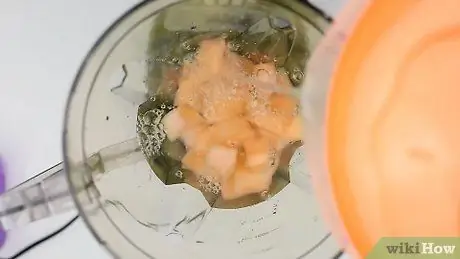
Step 3. Use it in a smoothie
Since it is an extremely juicy fruit, cantaloupe is an excellent ingredient for making a smoothie. Cut it into small pieces and put them in the blender along with other fruits, then let the flavors and textures blend together to create a healthy and delicious drink. When it's hot, add some ice cubes to cool down while you drink your smoothie. You can also turn it into a full breakfast by adding:
- Yogurt or milk (if you prefer of vegetable origin);
- Nuts;
- Seeds (for example of hemp);
- Protein powder.
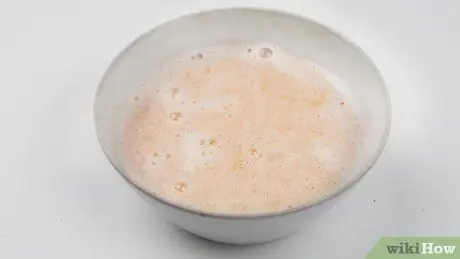
Step 4. Taste the melon soup
With cantaloupe melon you can obtain a delicious velvety, ideal to be served as an appetizer during the warm summer evenings, as it should be eaten cold. You can also prepare it in advance and enjoy it on a picnic or on the beach.

Step 5. Use it to make a sauce
If you've ever tasted a pineapple or mango sauce, perhaps paired with an exotic dish, you'll know how good fruit toppings are. You can get an equally tasty sauce by using cantaloupe melon, to combine it for example with:
- The tacos;
- The burgers;
- Hot dogs;
- The nachos;
- The fish.
Advice
- A ripe cantaloupe melon has a sweet scent and a beige skin. Weighing it with your hand you should feel it heavy and the petiole should give way slightly under gentle pressure from the thumb.
- When buying, select a firm fruit, avoiding those that are mushy, bruised or that have dark spots or the skin that is still very green.






